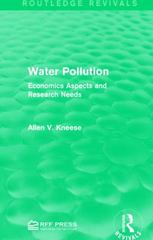Question
Based on quarterly observations for the U.S. for the period 1961-I through 1977-II, economists estimated the following demand function for coffee. The figures in parentheses
Based on quarterly observations for the U.S. for the period 1961-I through 1977-II, economists estimated the following demand function for coffee. The figures in parentheses are t-values. (note: t = B/se). R2 = 0.80.
ln(Qt) = 1.2789 - 0.1647 ln(Pt) + 0.5115 ln(It) + 0.1483 lnP't - 0.0089T - 0.0961 D1t - 0.1570D2t - 0.0097D3t
(-2.14) (1.23) (0.55) (-3.36) (-3.74) (-6.03) (-0.37) ...where:
Q = pounds of coffee consumed per capita P = the relative price of coffee per pound at 1967 prices
I = per capita personal disposable income, in thousands of 1967 dollars
P' = the relative price of tea per quarter pound in 1967 prices
T = quarterly time trend with T=1 for 1961-I, to T=66 for 1977-II
D1 = 1 for the first quarter of the year D2 = 1 for the second quarter of the yearD3 = 1 for the third quarter of the year
- How would you interpret the coefficients on ln(P), ln(I), and ln(P')?
- Is the demand for coffee price elastic? Explain how you know.
- Are coffee and tea substitute or complementary products? How do you know?
- How would you interpret the coefficient on T?
- What is the trend rate of growth or decline in coffee consumption in the United States?
- What is the income elasticity of demand for coffee?
- Test the hypothesis that the income elasticity of demand for coffee is not significantly different from 1.
- How do you interpret the coefficients on D1, D2, and D3?
- Which of the dummies are statistically significant?
- Is there a pronounced seasonal pattern in coffee consumption? If so, what is the pattern?
- Which is the benchmark quarter in this example? How would the results change if the benchmark quarter were changed to the quarter before this?
- This model only includes the differential intercept dummies. What implicit assumption is being made here?
- How would you re-write the model to take into account differential slope dummies?
- Suppose you are asked to forecast for the next period after the end of the sample, 1977-III. Suppose that in this quarter, the price of coffee is $5, the price of tea is 3, and income is 15,000. What is your forecasted value? What is your 95% confidence interval around that value? (Note: forecast the ln(Q) and its interval, then take the inverse-logs of these values to put your forecast in terms of pounds of coffee demanded.) To answer this, assume the standard error of the regression is 0.4.
Step by Step Solution
There are 3 Steps involved in it
Step: 1

Get Instant Access to Expert-Tailored Solutions
See step-by-step solutions with expert insights and AI powered tools for academic success
Step: 2

Step: 3

Ace Your Homework with AI
Get the answers you need in no time with our AI-driven, step-by-step assistance
Get Started


